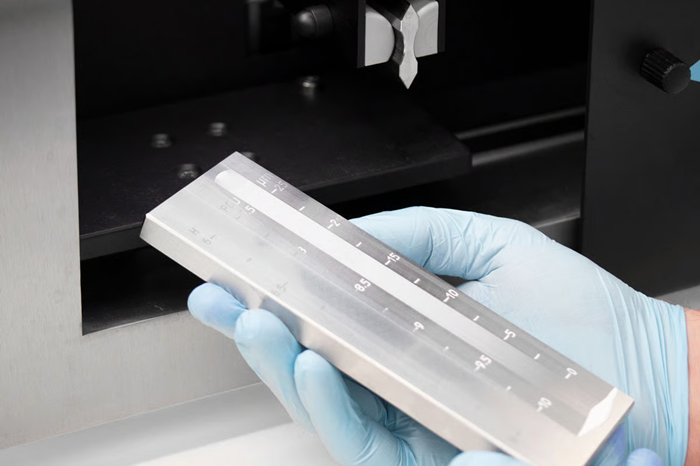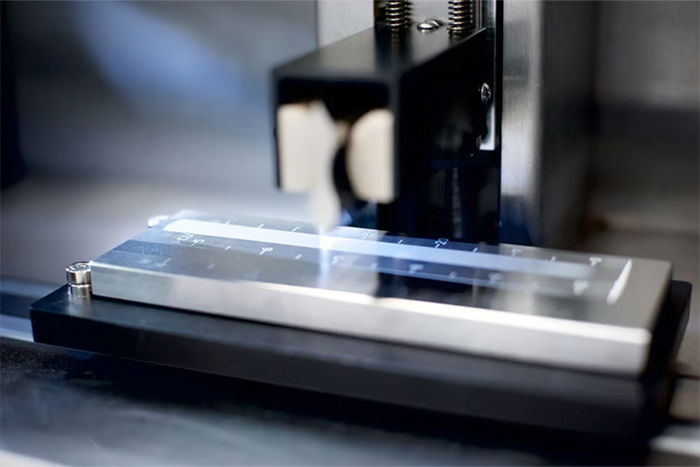Sponsored by LabmanReviewed by Maria OsipovaOct 30 2025
Precision is crucial when measuring the grind quality of particles in paints, inks, coatings, and pigments. The Hegman gauge has long served as a trusted instrument for evaluating dispersion quality, but reliance on manual readings introduces inconsistency. This is where automation makes a difference.

Image Credit: Labman
The Challenge with Manual Hegman Testing
Manual Hegman gauge testing is straightforward in principle: material is drawn down across the gauge, and the point where larger particles appear indicates the dispersion level. However, manual gauge readings mean this process can be highly subjective for three key reasons.
- Human Error and Interpretation: Different operators may interpret results differently due to differences in lighting, visual perception, and experience levels.
- Inconsistency Over Time: Results may differ between batches, shifts, or labs, complicating long-term comparison.
- Lack of Digital Record: Manual readings produce no audit trail, meaning result validation is difficult once testing concludes.
In fields where quality and traceability are crucial, these limitations can become bottlenecks.
The Automated Alternative
Labman developed and engineered the TIDAS system to eliminate subjectivity in Hegman gauge testing. By combining automation with digital imaging and analysis, TIDAS ensures precise, repeatable, and traceable outcomes every time.
Rather than depending on the human eye, TIDAS captures high-resolution images of the drawdown and applies sophisticated software to analyze the point of particle appearance. The results are objective, consistent, and fully documented.
Advantages of Automation with TIDAS
Selecting an automated Hegman gauge platform provides clear benefits:
- Consistency Across Operators and Locations: Each reading is analyzed identically, regardless of who conducts the test.
- Traceability and Documentation: Every test produces an image and digital record, facilitating quality assurance and regulatory compliance.
- Enhanced Efficiency: Automation accelerates the testing process and minimizes the need for repeat measurements.
- Confidence in Quality: Dependable, data-driven results reinforce both internal decision-making and customer trust.
Moving Beyond Subjectivity
Although manual Hegman testing has served the industry well, modern requirements for consistency, traceability, and efficiency need a more advanced solution. By automating the process, TIDAS guarantees trustworthy results.

Image Credit: Labman
Acknowledgements
Produced from materials originally authored by Rachael Marsay, Content Specialist at Labman.

This information has been sourced, reviewed and adapted from materials provided by Labman.
For more information on this source, please visit Labman.